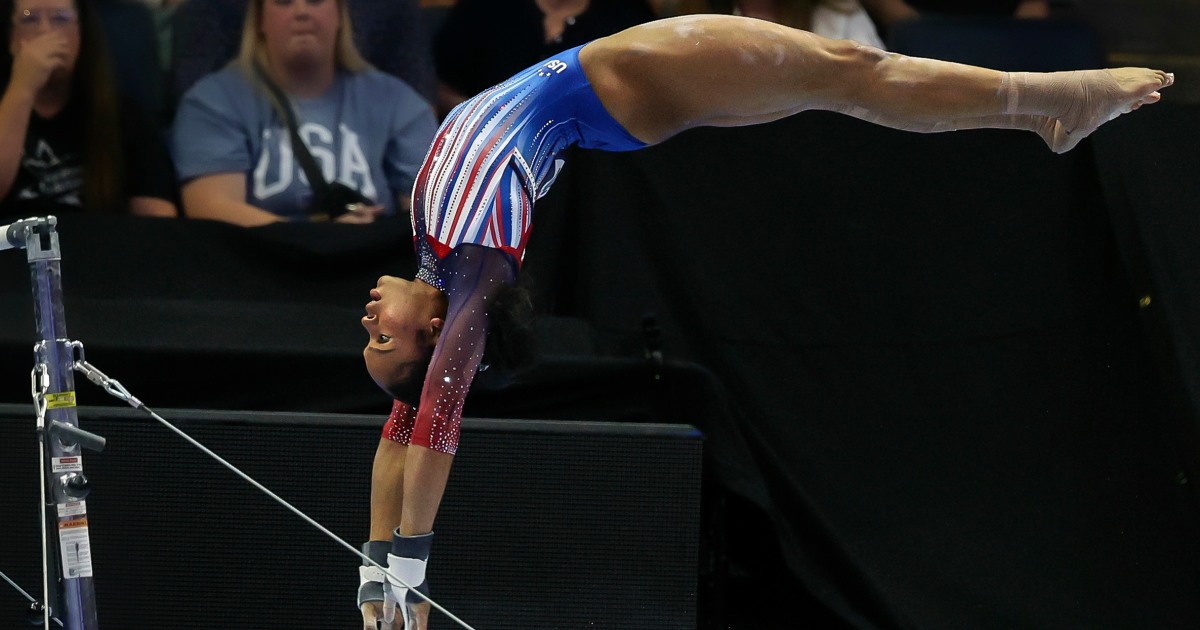In December, it seemed as though all discourse around the 2024 U.S. Open Cup would be about the usual topics: the upsets, the heroes and the status of the nation’s oldest soccer knockout competition.
Instead, January and February have seen Major League Soccer and the United States Soccer Federation embroiled in a second wave of talks about how, if at all, the first-division men’s league will participate.
Initially, MLS had requested to replace its first teams with its developmental sides from third-division MLS Next Pro. After days of blowback from soccer media and fans, U.S. Soccer declined to grant MLS a waiver to execute such a plan.
One day after the federation rejected the MLS proposal, the European Court of Justice in Luxembourg ruled in favor of the Super League, a 2021 project concocted by the owners of the richest and most prominent clubs in Europe looking to break away from their domestic leagues. The verdict set a precedent that revived some MLS owners’ hopes of leaving the U.S. Open Cup to prioritize other competitions.
So where does this leave the U.S. Open Cup? And what does a ruling in a European court have to do with the U.S.’ oldest soccer tournament?
What is the issue?
Publicly, MLS has cited concerns about fixture congestion as a key part of its decision to alter its participation. In 2023, Los Angeles FC set a new record by playing in 53 competitive matches in one calendar year, having traveled an estimated 63,000 miles.
MLS has also viewed the U.S. Open Cup as a chance to give its developmental Next Pro teams access to high-level competitive matches, given the stakes of a knockout tournament against teams at different levels of the pyramid.
MLS commissioner Don Garber said in May that U.S. Open Cup games are not ones “that we would want our product to be shown to a large audience.”
He added: “We need to get better with the U.S. Open Cup. It’s just not the proper reflection of what soccer in America at the professional level needs to be.”
On Wednesday during the 2024 MLS season opener, he said: “We will continue to do what we can to support the U.S. Open Cup, but we’re not going to do it in a way where the entire onus on making that tournament work is on Major League Soccer.
“It needs the support from our federation, they’ve pledged to show more support to that. It needs to make more sense for our players and for our clubs. At this point, we’re subsidizing that tournament.”
One source who has been a part of the ongoing planning talks lauded the increased effort made by the federation in terms of improving the commercial viability of the U.S. Open Cup, complete with an improved broadcast plan that has not yet been announced due to the format’s status being in limbo. As a federation-run tournament, the Open Cup would not be beholden to any agreement between MLS and its broadcast partners, chief among them Apple.
When U.S. Soccer denied the league’s request on December 20, however, it appeared that MLS’s plan to use the tournament as a developmental tool for its Next Pro teams would not progress. The following day, the sport’s landscape was once again changed an ocean away.
Why is the Super League ruling significant?
On December 21, the European Court of Justice issued a landmark decision that soccer’s world governing body FIFA and European equivalent UEFA rules blocking a potential European Super League were “unlawful.”
“The FIFA and UEFA rules making any new interclub football project subject to their prior approval, such as the Super League, and prohibiting clubs and players from playing in those competitions, are unlawful,” the ECJ added.
Manchester United fans protest after their side signed up to the European Super League in April 2021 (Oli Scarff/AFP via Getty Images)
The ruling galvanized the Super League’s staunchest proponents, chiefly Real Madrid and Barcelona. Stateside, sources tell The Athletic, it provided MLS owners and their lawyers with a precedent that governing bodies — including national federations — could not have full control over the competitions in which clubs participate. In the ensuing week, that point was raised to U.S. Soccer, per sources. The federation was left to ask itself if it wanted to get in a fight with MLS over its U.S. Open Cup participation.
“We’re really disappointed in the federation for not showing stronger leadership in this situation,” USL president Paul McDonough told Yahoo Sports on Wednesday. “Even though none of (our teams) are happy, they understand the importance of the Cup. But it’s a hard one when you believe that you’ve been put into a situation that’s not great — do you let your emotions run wild? Or do you learn, discuss, and then make the best decisions for yourself and for the collective?”
Why is this important?
First played in 1914, The Lamar Hunt U.S. Open Cup is the oldest ongoing competition in American soccer. In its current form, the tournament pits about 100 professional and amateur teams from across the country against each other in a single-elimination tournament.
Like the FA Cup in England and the NCAA tournament in college basketball, the Open Cup’s primary appeal is the potential for a massive upset. In recent years, teams from this country’s lower leagues, most often the USL, have regularly beaten MLS teams in Open Cup play.
These matchups are especially notable because U.S. soccer does not employ promotion and relegation for its club teams: the Open Cup is the only context in which an MLS team will meet a lower-league team in a competitive match.
MLS teams have largely dominated the competition’s later rounds since the league joined the Open Cup in 1996. No lower-division team has won the tournament since the Rochester Raging Rhinos lifted the Cup in 1999, with only two non-MLS teams making the final this millennium: the 2008 Charleston Battery and the 2022 Sacramento Republic.

The Lamar Hunt U.S. Open Cup trophy on display in September (Hector Vivas/Getty Images)
The tournament is an important revenue stream for amateur and lower-division clubs in the United States. Open Cup matches against MLS sides are frequently a massive draw for these clubs and crowds for these matches can significantly outnumber those present at everyday games.
Still, the tournament has struggled to gain traction amongst MLS fans, many of whom don’t place the same significance on Open Cup fixtures as they do on league matches. MLS teams frequently host Open Cup matches at smaller venues and in front of far smaller crowds.
What’s next?
One source expected that the 2024’s final format could be announced as soon as early next week. It was reported that as few as eight MLS teams would participate.
Initially, this year’s field was expected to be composed in the same way as countless preceding installments — the 2023 tournament involved 99 teams after the preliminary qualifying rounds. Currently, there are 68 confirmed participants for 2024, and MLS is not the only league that has not submitted its official roster of participating clubs.
The first round is scheduled to kick off on March 19. The 32 teams are amateur qualifiers who operate outside of the three professional sanctioned levels of the U.S. Soccer pyramid. That includes 11 local qualifiers, the National Amateur Cup champion, the UPSL Spring Champion, and eight teams from the National Premier Soccer League.
The final 11 first-round entrants — that is, those from USL League Two — were thought to be in limbo until Wednesday, when the USL informed U.S. Soccer that all of its qualified clubs would participate in the tournament. That includes the 24 members of the second-division USL Championship as well as the 12 teams playing in third-division USL League One.
MLS makes up the largest portion of the tournament’s remaining field, with 26 teams based in the United States. Its third-division developmental league, MLS Next Pro, will have at least two teams (its independent sides Carolina Core FC and Chattanooga FC) in the field, with the league’s other teams all affiliates of MLS first teams and therefore ineligible unless U.S. Soccer allows organizations to swap which team it enters. It is also unclear how many clubs from the third-division National Independent Soccer Association will be able to play.
Clubs in the second and third divisions enter the tournament in its second round.
(Top photo: Jason Allen/ISI Photos/Getty Images)

Christine Lake is a sports fanatic who lives and breathes athletics. With an extensive background in sports journalism, he covers everything from major league championships to grassroots sports events. When she’s not on the field or at the stadium, you’ll find Christine coaching youth sports teams.








